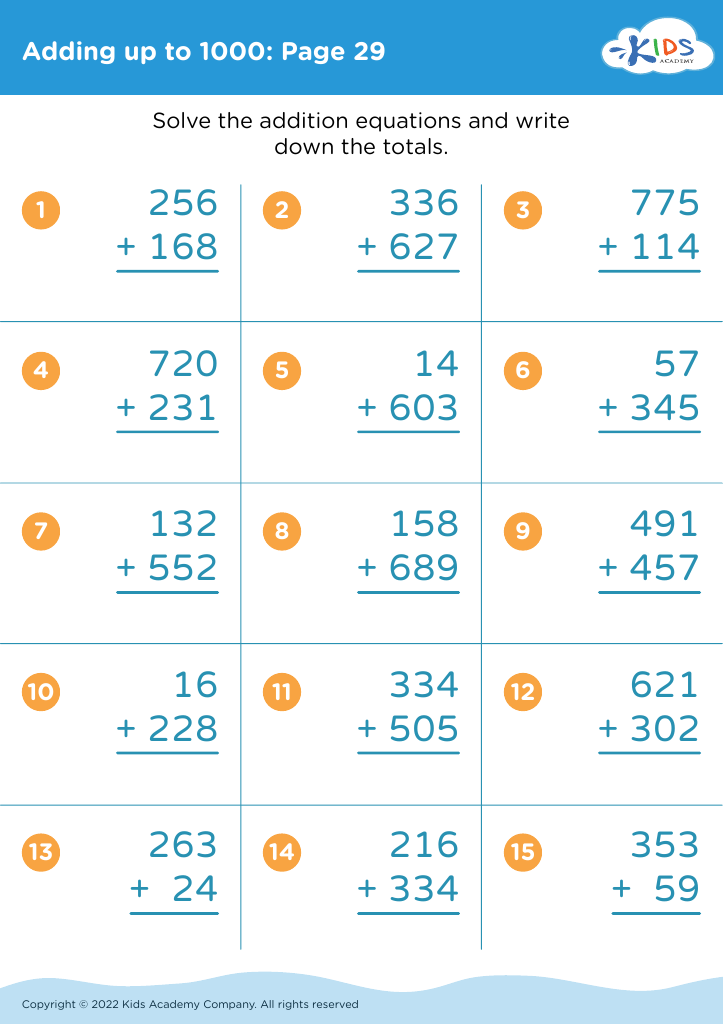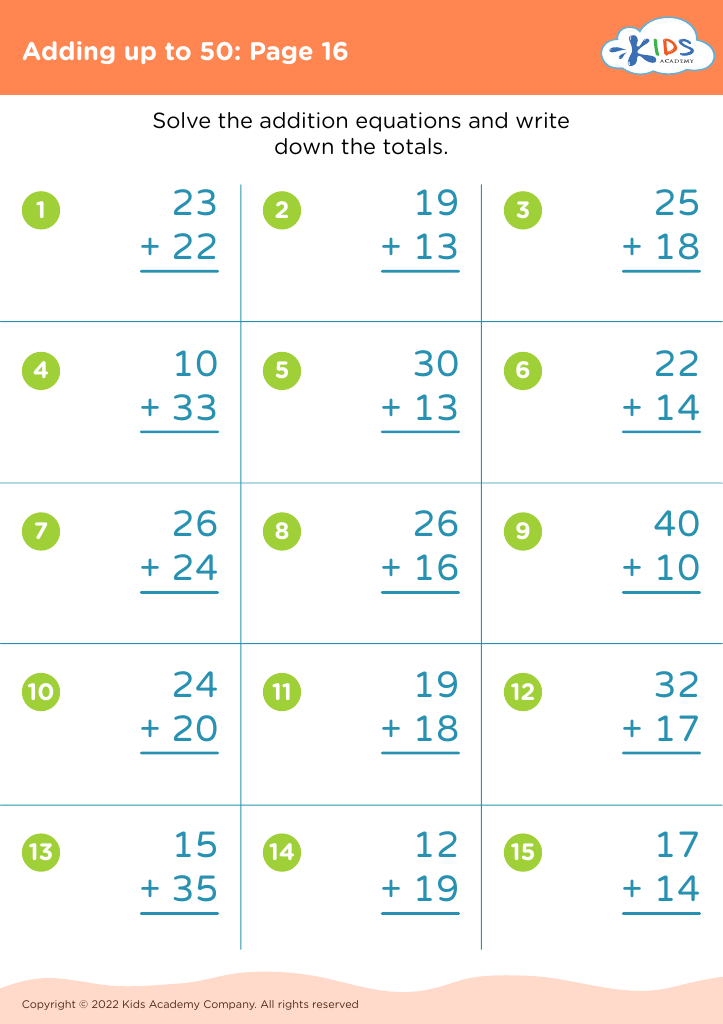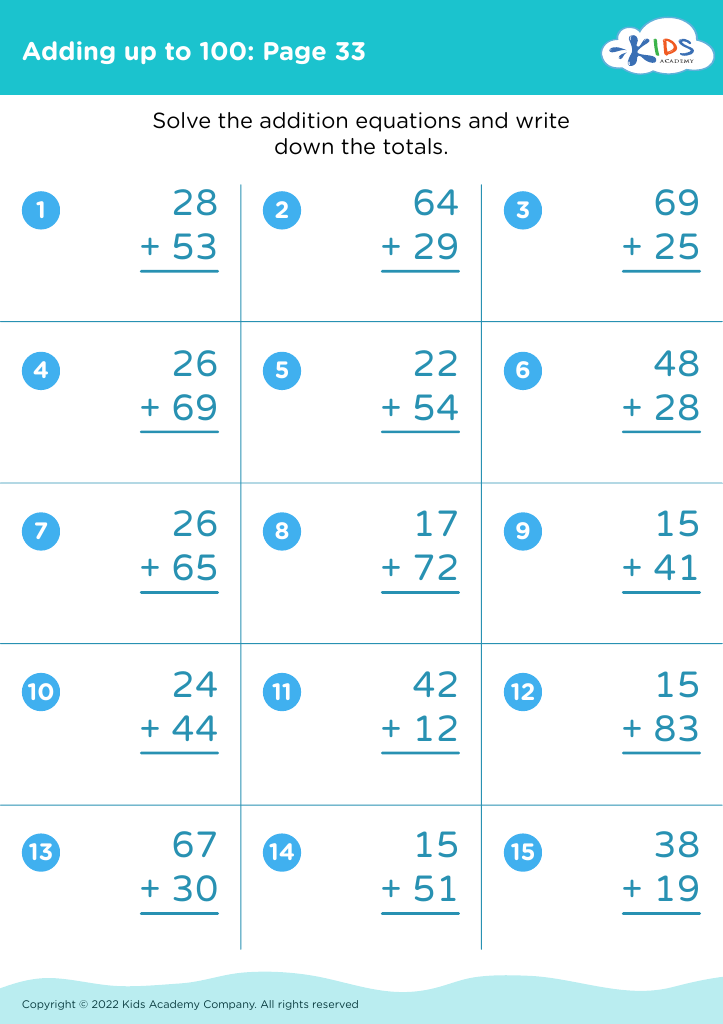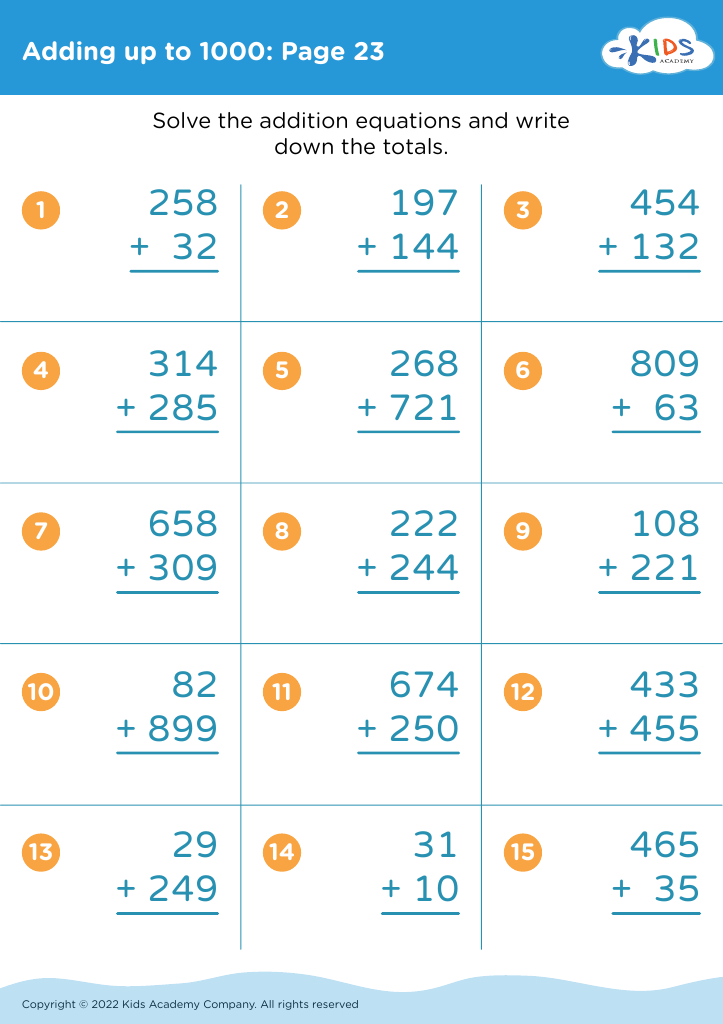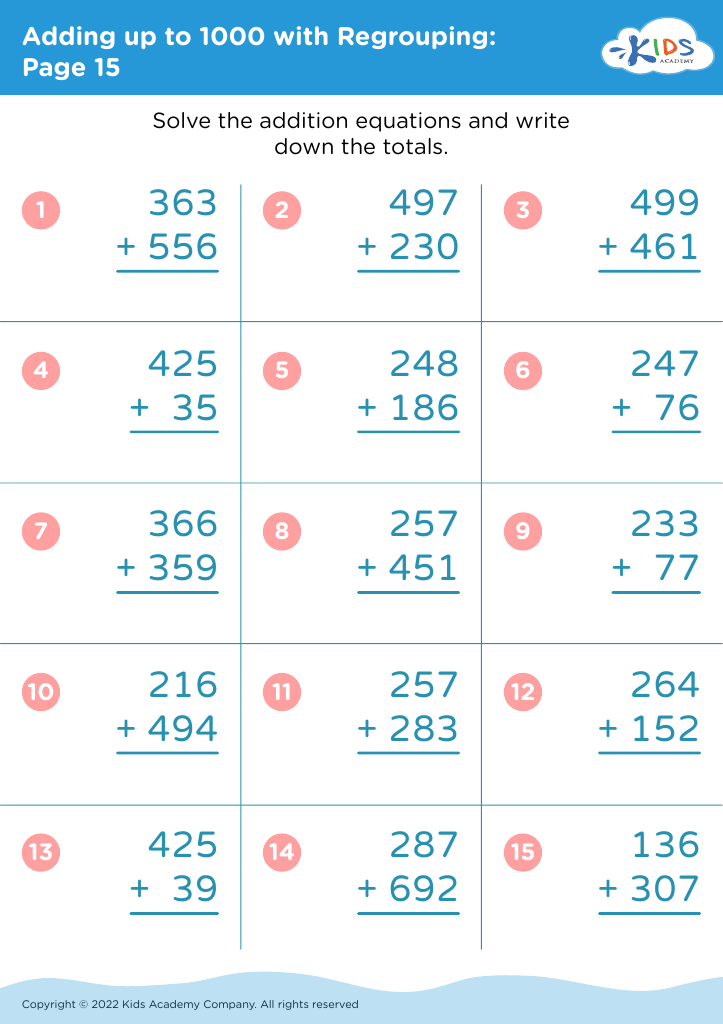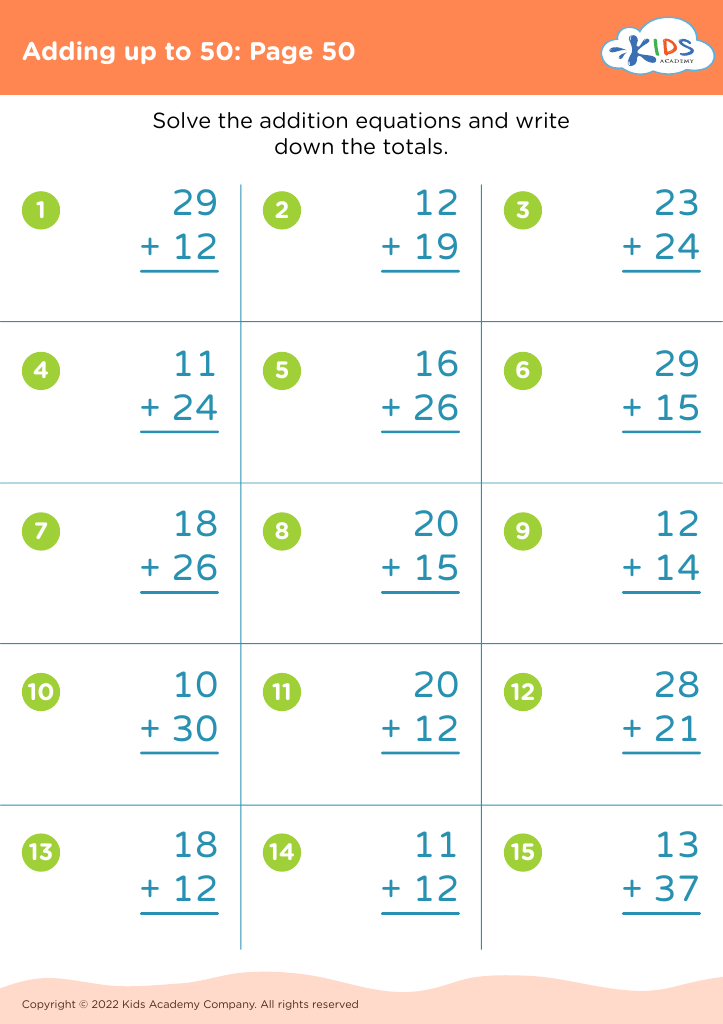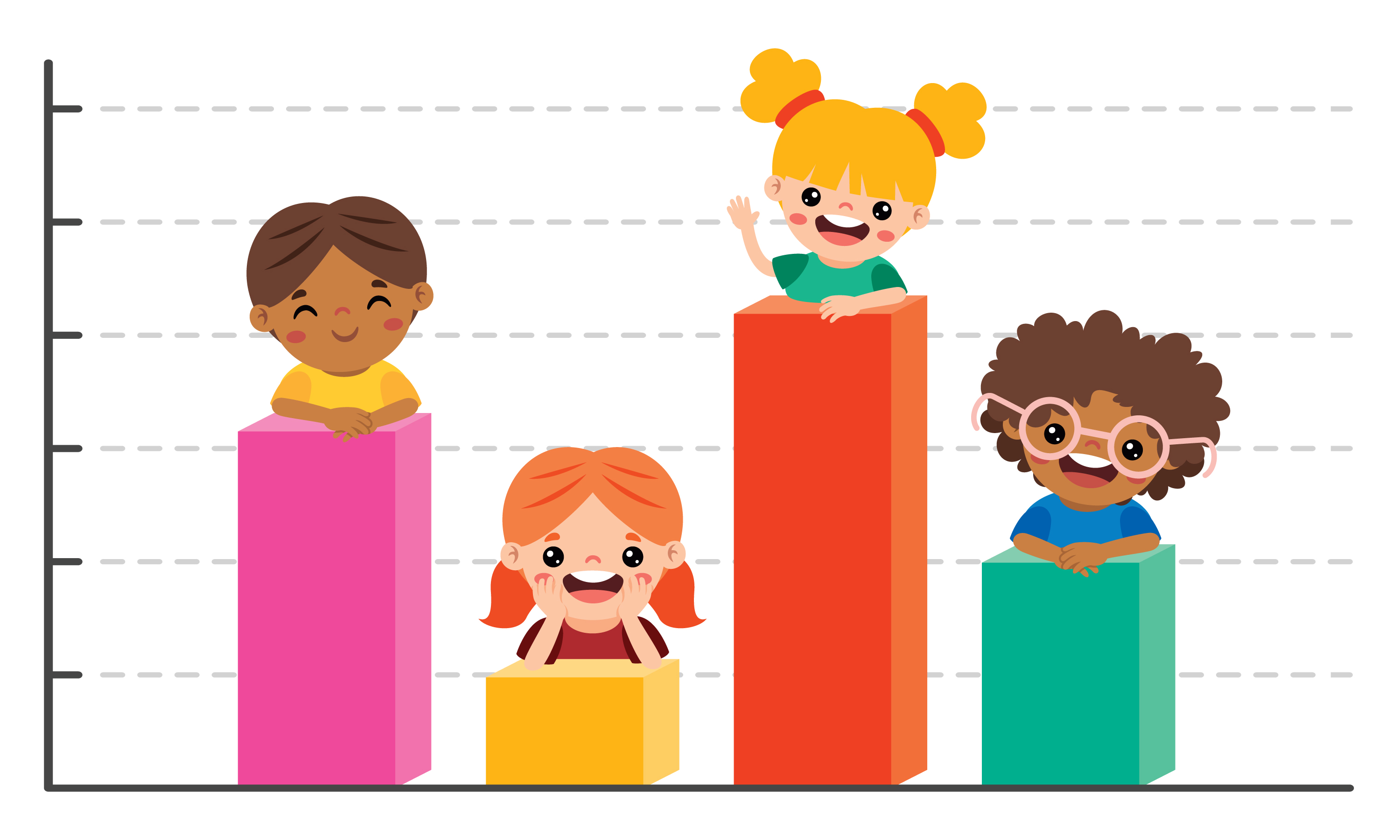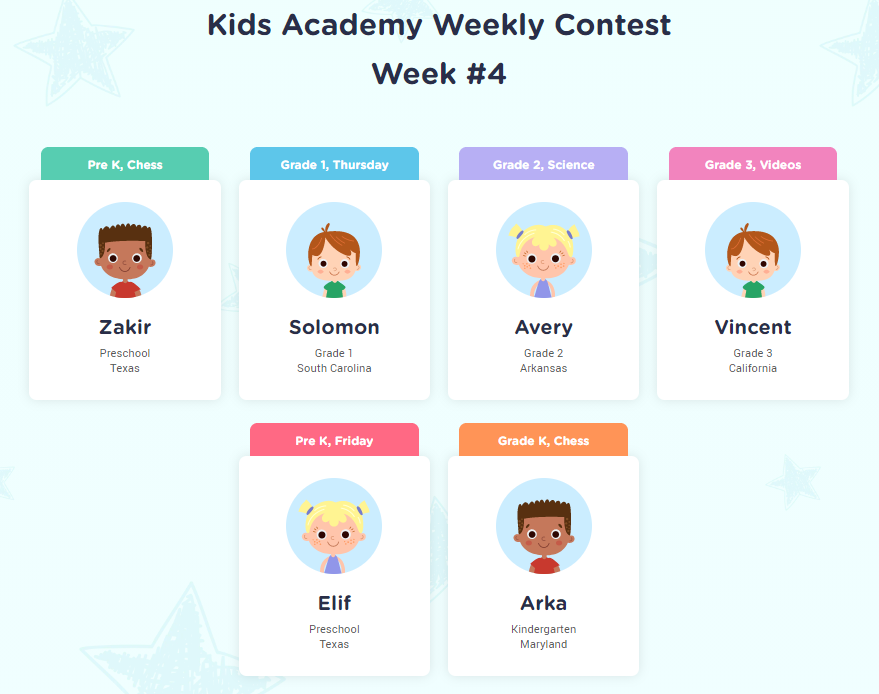Understanding time Math Worksheets for Ages 5-9
10 filtered results
-
From - To
Explore our engaging "Understanding Time" Math Worksheets designed specifically for children ages 5-9! These worksheets provide a fun and interactive way for young learners to grasp essential concepts of time. Featuring playful illustrations and diverse exercises, kids will practice reading clocks, differentiating between seconds, minutes, and hours, and mastering both analog and digital time. Ideal for reinforcing classroom lessons or home learning, our materials promote critical thinking and boost confidence in time-telling skills. Encourage your child’s mathematical growth while making learning enjoyable and effective. Visit our website to access a variety of worksheets tailored to your child's learning journey today!


Years Worksheet
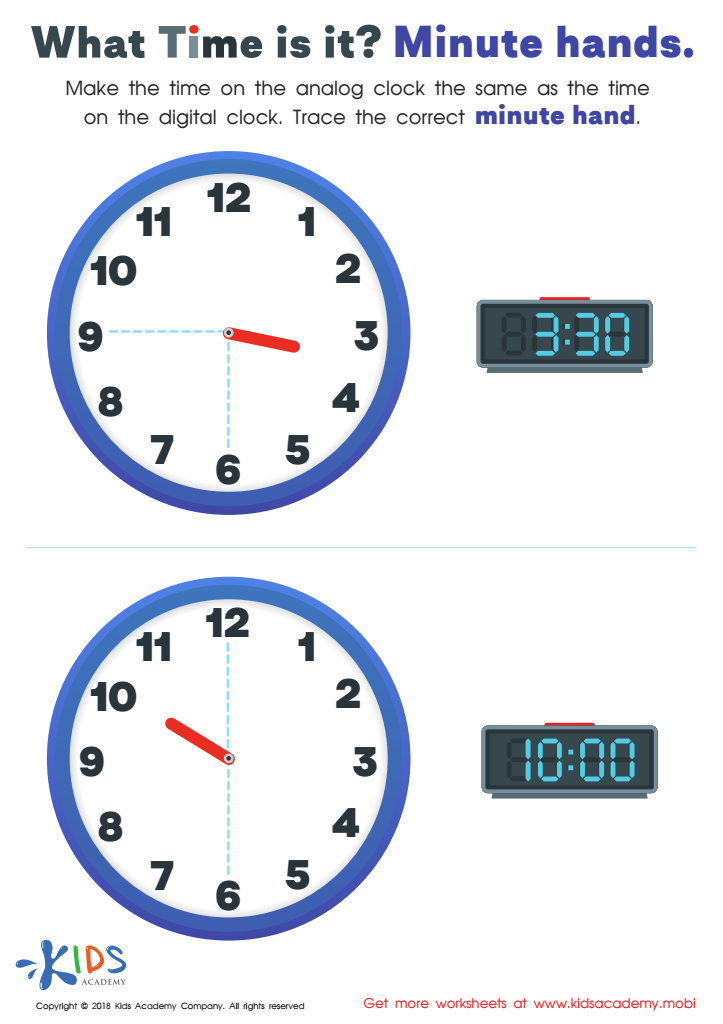

What Time Is it? Minute Hands Worksheet
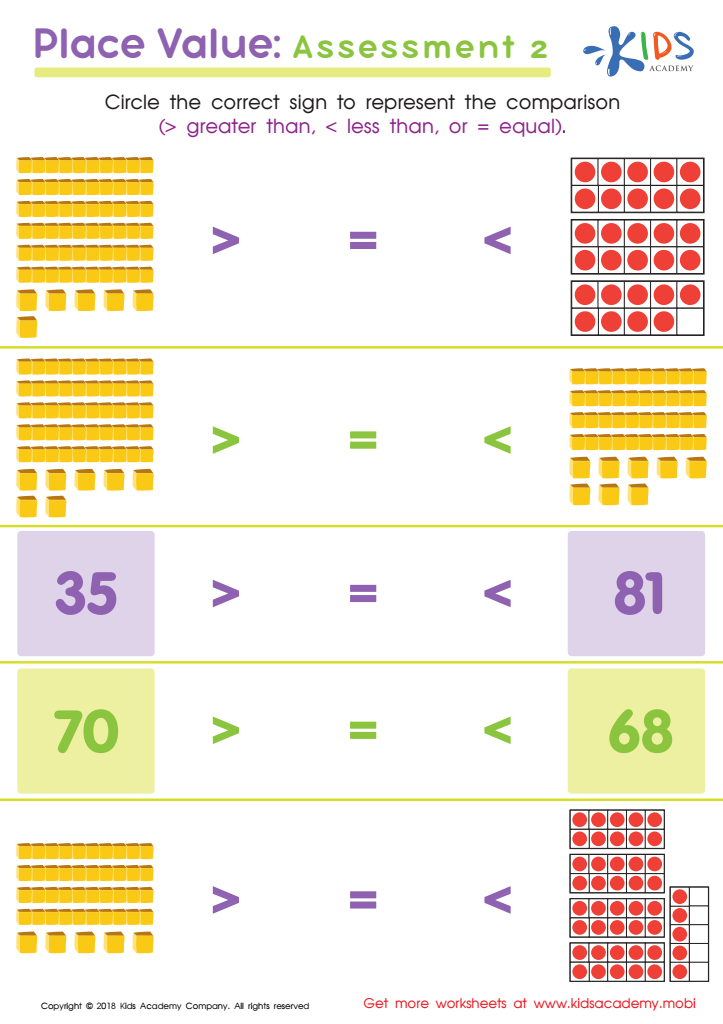

Place Value: Assessment 2 Worksheet
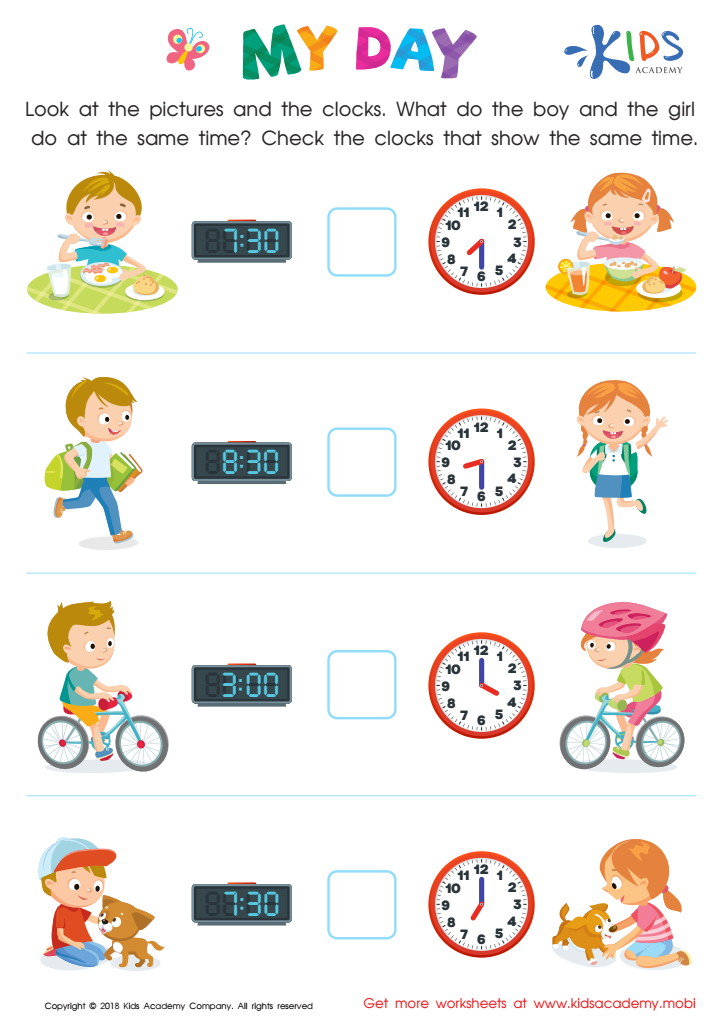

My Day Worksheet
Understanding time is a fundamental mathematical concept for children aged 5-9, and it is vital for their overall development. First, learning about time helps children build essential cognitive skills, including critical thinking and problem-solving. By mastering how to read clocks, identify time intervals, and understand the concept of past, present, and future, children develop an organized thought process that can be applied to various areas of learning.
Moreover, grasping time helps promote responsibility and independence. Knowing how to tell time encourages children to manage their daily schedules, whether it involves getting ready for school or planning playtime. This skill fosters autonomy and instills a sense of time management early on.
Furthermore, understanding time mathematics has real-life applications. Whether coordinating activities, understanding durations, or setting goals, children who are time-savvy can navigate daily life with increased ease and confidence.
Parents and teachers play a crucial role in facilitating this learning. Engaging activities, such as games and storytelling methods that incorporate time, can instill a curiosity about time that enhances children's overall mathematical understanding. Supporting children in this foundational area not only aids their academic success but also enriches their everyday lives.
 Assign to My Students
Assign to My Students

